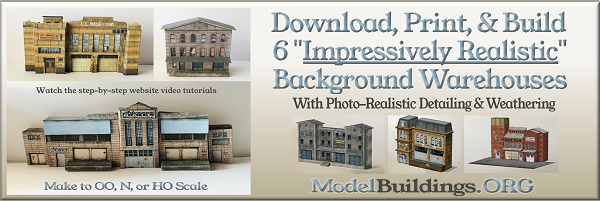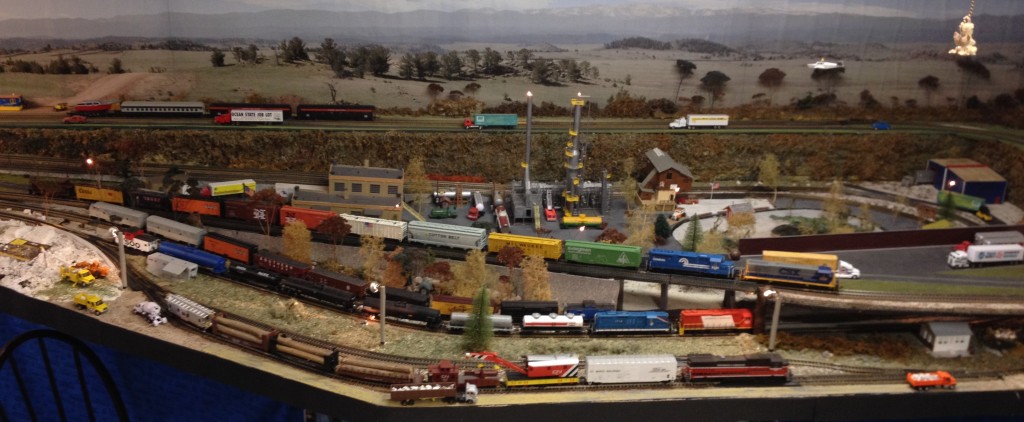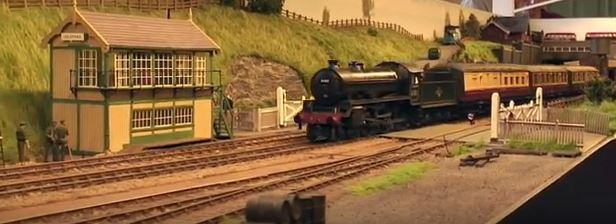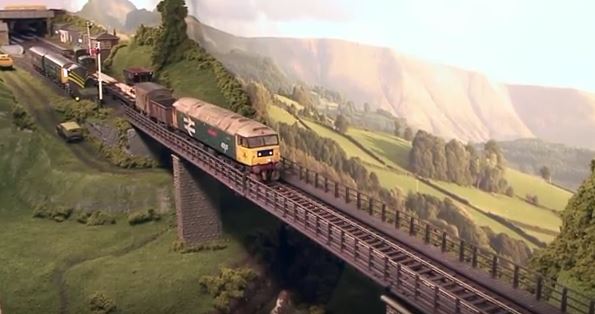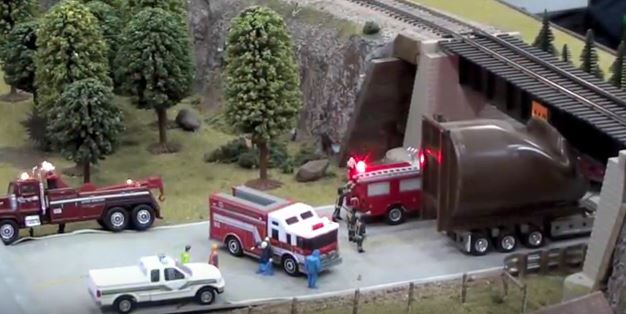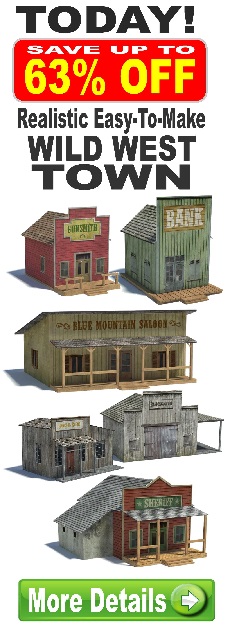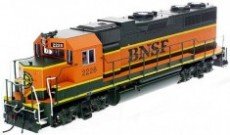Everything on model trains, model railroads, model railways, locomotives, model train layouts, scenery, wiring, DCC and more. Enjoy the world's best hobby... model railroading!
How To Power A Layout
William asks readers:
“I used to have three layouts, 2 ‘OO’ gauge and ‘N’ gauge, all analog, that was 5 years ago. I have since moved, and I want to start up again. This time in DCC. I have laid every thing out, connected the track, laid on Scenic Railway foam track. I have the Hornby Elite system, but I can not make the track live. Every time I connect the power, an error comes up. Has anybody got an idea of the reason why?”
How to Wire a Modular Train Layout
Andrew asks readers:
“I am about to embark on my first HO layout and, after reading good advice on this blog, have decided to construct it in 4 modules. I’ll be able to work on the layout one module at a time. We might be relocating in 2 years, hence my reason for building in modules. My question is simple; Is there any special way to disconnect and reconnect the wires to make relocation easy?”
Simple, but Clever Idea Adds Activity
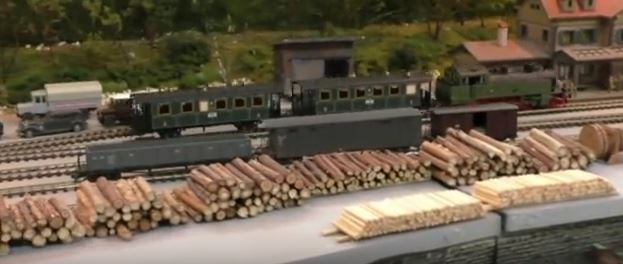 Here’s a simple idea from the Loughborough Model Railway Exhibition that anyone could do at home. The timber is ready for loading onto wagons and can easily be removed from time to time to vary the scene. A crane, forklift, and workers could be included to add more activity.
Here’s a simple idea from the Loughborough Model Railway Exhibition that anyone could do at home. The timber is ready for loading onto wagons and can easily be removed from time to time to vary the scene. A crane, forklift, and workers could be included to add more activity.
POLL RESULTS: Will your layout have a Christmas feature this year?
Our first Christmas poll asked: Will your layout have a Christmas feature this year?
Results were as follows:
- No, my layout doesn’t suit a Christmas theme (51%)
- Unfortunately I don’t have a layout yet (27%)
- Yes, I’ll add a hint of Christmas to the layout (15%)
- Yes, my layout will have several Christmas features (8%)
Wiring Code 100 Insulfrog Crossovers
Mike asks readers for advice:
“Hello, about to embark on wiring my new HO layout for DCC. I use code 100 peco track and points, all of which are electrofrog. I have had to purchase two large/long insulfrog cross overs and I am unsure how to wire them for DCC (I have never wired a layout before). Can anybody help. Many thanks.”
Where to Start with Building a Layout
Atul asks readers this question:
“I’m in the early planning stages for my layout. Currently, I’m leaning toward HO scale but I will consider O scale as well. I definitely want sound capability. Can someone tell me which brands are most expandable, as far as accessories available and options? Recommendations please.”
Rail Bridge Accident
This type of incident is all too frequent, but fortunately this scene is a model and not a real rail bridge crash. Just as well, because who knows what that brown tank could be storing. Misjudging the height of a rail bridge underpass can be dangerous, disruptive, and costly… but some bridges seem to get hit time and time again despite clear signage.
The scene was filmed last year at the Great Edmonton Model Train Show in Alberta, Canada.
Online Train Club Celebrates 5 Years
The online Model Train Club is about to turn 5, with the membership numbers and resources increasing every month. Some members have been with the club since it started. The club is keeping pace with changing times and recently added a new category of ELECTRONICS for members to access. The club is not intended as a replacement for joining a local model railroad club, however it is like a giant resource library for those who want to access help and advice at home at any time of the day or night, in any location worldwide. Current members are spread across the globe including: USA, Canada, UK, Australia, Germany, New Zealand, South Africa, France and numerous other countries.
Solution To Train Coupler Problems
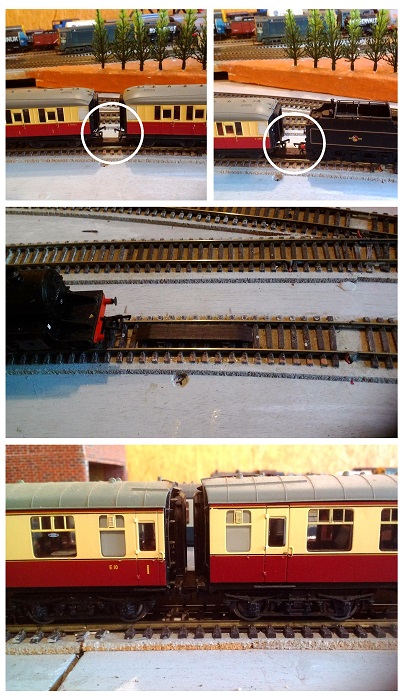 Phillip has been experimenting with various coupler options and sent in these tips to share.
Phillip has been experimenting with various coupler options and sent in these tips to share.
I had been looking on the internet for Kadee couplers for the NEM pockets for Bachmann coaches and rolling stock, but found it was not that easy to convert due to different heights of the NEM pockets, plus the cost to convert most of my rolling stock.
I found a PECO ST261 setrack decoupling unit which I purchased last Saturday and I have installed six on my layout so far. I now can decouple the locos and coaches and swap the locos around and visa versa.
I had to experiment with them and found that as long as you keep enough speed up and the couplers are tensioned, they do not uncouple while going over the decoupling unit. The tensioned drop down bars on the couplers pushes down on the spring while riding over it. I positioned them on the track between the wheels where the loco stops at the station, and just have to go forward a bit and reverse over the decoupling unit and bingo, they are separated.
I have found that some of the couplers on the four wheeled wagons just ride over the ramp when reversing and don’t decouple. I think the push up bar is just a fraction short. If I raise the decoupling ramp a fraction, the diesel locos bottom out on the axle cover. I’ll be purchasing some more when stocks are available and I would recommend these decoupling ramps as they are great and make my railway operation more interesting.
Also, I have closed up the gap between the coaches by swapping the coupling on one end of the coach with a shorter cranked coupler (36-027). There is no buffer lock with this set up on my layout. If I use two of the short couplers, the coaches will not couple up and both ends of the coaches touches.
If you would like to submit an article to the Blog Moderator for possible publication, please use this link http://www.model-train-layouts.net/Submit-An-Article.html
POLL RESULTS: Do you prefer operating freight or passenger trains?
The results of the last poll confirmed what most of us probably suspected:
The Question was – Do you prefer operating freight or passenger trains?
Freight (65%)
Passenger (20%)
I don’t have a layout yet (15%)
Although passenger cars can add greatly to a layout, they are more limited than freight trains in that they usually run the same route with the same cars. Freight trains pull into yards where a lot of switching happens, their loads change, they visit industries, ports, etc – so provide lots of operational possibilities and variations.
